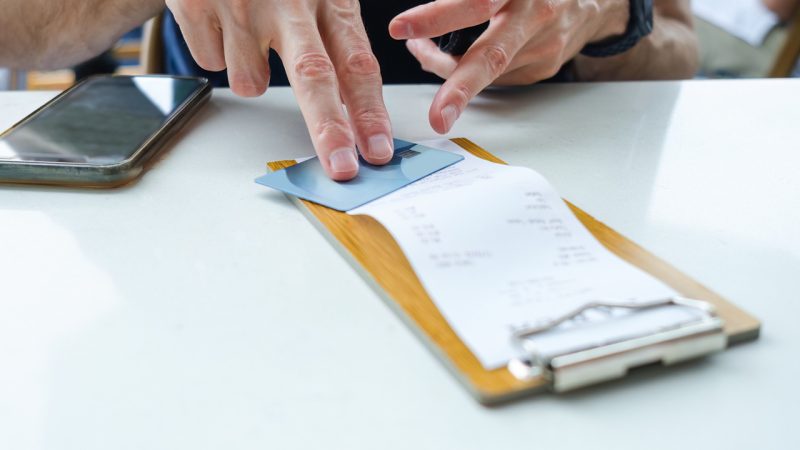Diners tip more when this little detail is added to the check, study suggests
(NEXSTAR) – A smile goes a long way — especially if it’s printed on your restaurant check.
The results of a recent study published in the International Journal of Hospitality Management suggest that restaurant patrons can be encouraged to tip a little extra if there’s a smiley-face emoji printed alongside the suggested gratuity on their check.
“We hypothesized that if we gave them this smiley face, or if it was kind of cute, it would elicit a more positive reaction,” co-author Sarah Lefebvre, Ph.D, an associate professor of marketing at Murray State University in Kentucky, told Nexstar of the study’s aim.
Lefebvre and co-authors Laura Boman, Ph.D, and Marissa Orlowski analyzed tipping behavior in three different circumstances, which including on-site dining and online ordering. In each case, when the total bill was presented, the subjects were prompted to select from a set of suggested gratuities with different emoji printed next to each amount: the lowest suggested gratuity was paired with a neutral emoji (not smiling or frowning), and increasingly larger amounts were accompanied by happier-looking emoji.
These types of prompts are not entirely unlike existing practices, whereby a restaurant operator might print the suggested monetary tip amounts (e.g., 18% = $9.00, 20% = $10, etc.) or even verbal prompts (e.g., 18% for “good” service, 20% for “great” service, etc.), Lefebvre said. Some servers might even draw a smiley face in pen on the check.
These methods work to a degree, though some have the unintended effect of irritating the customer, she said.
But smiley faces, as previous research has shown, may be similarly processed by the human brain as an actual smiling face — provoking a more positive response.
The results of the newer study seem to support the authors’ hypothesis, too: When presented with a spectrum of emoji alongside the suggested tip amounts (either on a printed receipt or a digital screen), the study’s subjects tipped an average of 11% more.

As Lefebvre notes, the study’s findings present yet another opportunity for restaurant operators to maximize tips for their employees — or at least prevent their clientele from getting agitated.
“A lot of customers are really pushing back against tipping, because they’re being asked to tip in so many circumstances,” Lefebvre said. “Providing a method that is easily implemented … gives operators an easy way to take action to benefit the employee.”
Lefebvre herself, however, admits that tipping culture in the U.S. has gotten “out of control,” pointing to COVID-era tipping practices that persist in a post-COVID world.
“We had altruistic motivation,” Lefebvre said of tipping service workers during the pandemic. “We were tipping them in a reciprocal behavior. They were taking a risk and we weren’t.”
Many of today’s consumers, though, are starting to resent being asked to tip at quick-service or minimal-service establishments where they previously hadn’t been prompted, experts believe.
“People think it’s manipulative, they resent it, and their perceptions of service go down,” Michael Lynn, a professor of marketing and management communication at Cornell University, previously told Nexstar.
The trouble is, these prompts aren’t likely to go away anytime soon. Lynn, citing a study from researchers at Purdue and Temple Universities, said these newer practices are generally effective at soliciting higher gratuities from customers, despite leaving them with negative emotions.
Smiley-face emoji, at least, might alleviate some of that aggravation, especially in settings where the waitstaff or service workers deserve a little extra, Lefebvre and her co-authors suggest.
“There’s an uncomfortable feeling, or an irritation when dealing with tip requests,” Lefebvre told Nexstar. “We wanted to know, how do we make this a more positive experience?”
Copyright 2023 Nexstar Media Inc. All rights reserved. This material may not be published, broadcast, rewritten, or redistributed.

